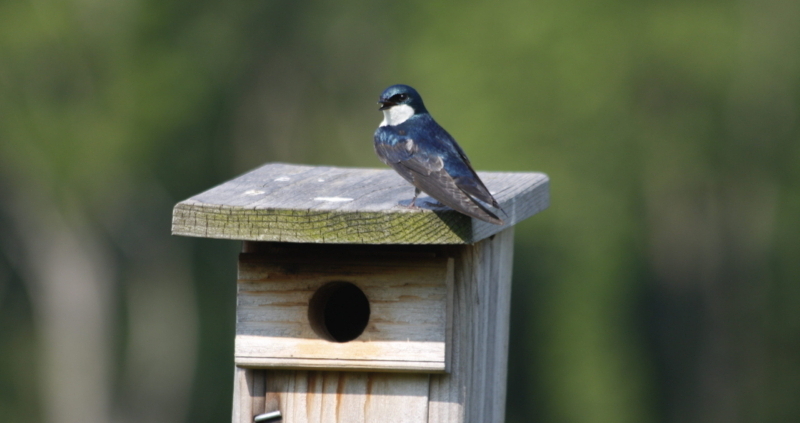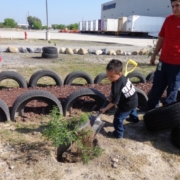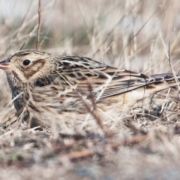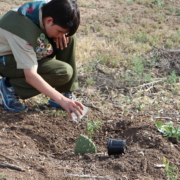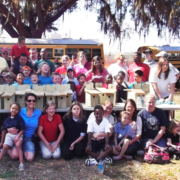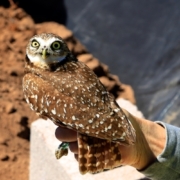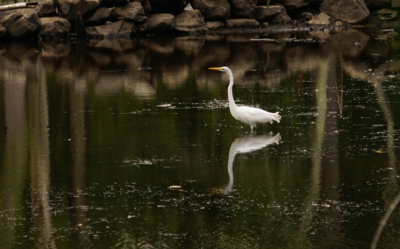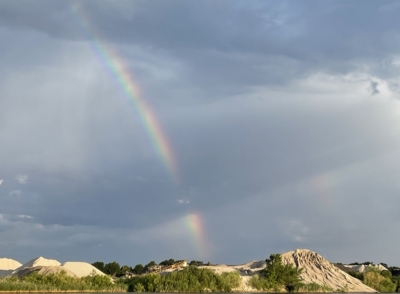Ashland | Responsibly Solving to Support a Thriving Habitat at a Former Landfill
Ashland’s Old York Road site, a former landfill located in Burlington Township, New Jersey, comprises seven acres of grassland and has been actively managed for conservation since 2012. The site houses projects ranging from invasive species management to mammal monitoring to educational partnerships. Ashland’s conservation goals include monitoring and supporting native wildlife and incorporating native vegetation to reduce maintenance needs across the site. Through a partnership with Rutgers University, the company also facilitates hands-on learning opportunities for future conservation professionals.
Ashland’s commitment to environmental protection aligns with the Responsible Care® program, a global initiative developed by and for chemical companies. “Identifying opportunities to create conservation projects on environmental remediation sites aligns with Ashland’s global environmental, social and governance (ESG) initiatives and Responsible Care goals of improving the environmental and social impacts of the company’s operations on our communities,” explained Shannon Lloyd, remediation project manager at Ashland.
Old York Road plays host to various species of birds, bats, mammals and pollinators, with projects designed to attract and support these native species. The bird box project targets cavity-nesting songbirds, with predator guards ensuring that only avian species can access the boxes. Through weekly monitoring, employees found that 52 fledglings successfully graduated from the nesting boxes in 2020 and 2021, with the number of successful fledglings nearly doubling in 2021.
As white-nose syndrome has been documented in the state of New Jersey, Ashland’s solvers have aligned their bat project with the White-Nose Syndrome Response Team’s recommendations for supporting bat populations, such as providing shelter, food and water. In addition to box observations, Ashland also uses an ultrasonic microphone for monitoring purposes. Through echolocation surveys, the team has determined that there are five species of cave-dwelling bats in the area: big brown bats, little brown bats, red bats, hoary bats and silver haired bats.
To facilitate further species monitoring, Ashland has installed a wildlife camera trap annually since 2019 to record evidence of mammals such as white-tailed deer, racoons and red foxes. Two cameras are installed and deployed for five days during seasonal monitoring events. Nine species were identified using this camera, including the target species plus groundhogs, opossums and squirrels. Ashland also conducts pollinator monitoring of bumblebees, honeybees and butterflies, and in May 2021, 19 total pollinator species were observed.
Through a formal learning connection with Rutgers University, Ashland creates real-world educational experiences for local students that surpasses what is possible through classroom instruction alone. “Ashland has made a commitment to science, technology, engineering and math (STEM) education,” said Lloyd, “and partnering with students who gain hands-on field experience action supports that commitment.” This mutually beneficial partnership with Rutgers provides students the opportunity to apply their ecological expertise to the site’s projects by monitoring nest boxes and conducting wildlife and vegetation surveys, while Ashland receives useful data for monitoring and documentation. Through this project, students hone their skills of data collection and management, field observation, species identification and applied conservation. “There is a learning curve that varies each year,” explained Lora Sterner, senior associate environmental scientist, Kennedy Jenks Consultants, Inc. and program manager for Ashland’s WHC sites. “Preparing step-by-step procedures specific to each project is part of the programmatic approach and improves the consistency and quality of information used in preparing the certification documentation.”
The program at Old York Road also targets invasive species. The tree of heaven is an invasive tree in the area that grows quickly and outcompetes native plants for resources such as water and sunlight. They were first observed on-site in 2017 and were targeted for removal via mowing and cutting. Tree of heaven often serves as habitat for another invasive species, the spotted lanternfly, which was first seen on-site in 2020. The team has since targeted trees of heaven more heavily for removal, and the ongoing removal of these trees will help slow the growth of lanternfly populations.
As part of their remediation of the former landfill, the team at Ashland went above and beyond regulatory requirements by seeding the landfill cap with a native seed mix and developing a maintenance plan to support the growth and success of native plants. Thanks to a conservation easement, the remediation project is protected from any habitat loss or fragmentation that might occur due to development or reuse of the site.
Through partnerships, rigorous monitoring and a dedication to supporting native plants and animals, Ashland’s solvers have developed a thriving habitat.
Related Content:
- Blogs:
- Webinars:
- Looking out for Pollinators: Strengthening Pollinator Projects through Monitoring and Citizen Science
- Best Practices for Education Programming at Corporate Sites
- Cleaning Up: Involving Community and Ecology in Remediation Projects
- Beyond the Pollinator Garden: How to Make the Greatest Impacts for Bees and Butterflies
- Grassland Birds in Decline: How You Can Help
- Invasive Species: An Introduction
- Beyond the Roosting Box: Next Level Bat Monitoring with Acoustic Technology
- Project Guidances:
- White Papers:
Quick Facts
| Site Name: | Old York Road Site |
|---|---|
| Category: | Member Spotlight |
| Tags: | avian, bats, formal learning, invasive species, Mammals, Member Spotlight, pollinators, remediation |
| Site Location: | Burlington, New Jersey |
| Partners: | Coventry Environmental, Geosyntec, Kennedy Jenks, Rutgers University |
| Certification Since: | 2014 |
| Certification Level: | Gold Certified |
| WHC Index Link: | Learn more about the program |
